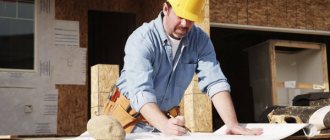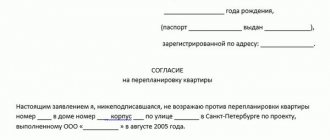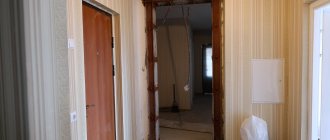How to obtain approval?
The regulations do not contain specific requirements for the document. And yet, when drawing up a neighbor’s consent to construction, it is important to take into account a number of rules:
Despite the absence of a specific form of permission in the legislation, the generally accepted model should be used, if necessary, adjusting individual provisions.
What should I include in the document?
When drawing up a document, a number of mandatory information must be specified in the content:
- Information about homeowners located in the neighborhood: full name, passport details and addresses of owned properties.
- Details of real estate documents to confirm ownership.
- Clarification of the agreed subject of the dispute with an indication of compliance with urban planning requirements.
- Date of document execution.
- Signature of each owner with transcript.
The consent must be accompanied by documents confirming the positions specified in the permit. You will also need to provide a diagram of the land plot on which the facility is planned to be built.
The content of the consent can be supplemented with other items - the amount and nature of information that needs to be added largely depends on the circumstances.
Nuances
- There is no need to obtain the consent of all residents of the house. This applies only to the owners of premises in an apartment building, and not to all people living in it.
- The procedure is simplified if the house has an HOA, then you can submit a request to hold a general meeting, at which a decision on the issue will be made by all owners. In other cases, you will have to go around all the owners yourself.
- An absentee voting procedure is allowed, when owners transmit information about their consent/disagreement, details of the certificate of ownership and personal data to a certain place.
- Consent is not issued for the transfer of an apartment to non-residential use, but for reconstruction or redevelopment in connection with the commercial purposes of the transfer.
What to do if they don’t give it?
If it is not possible to come to an agreement with the neighbor, the builder will have to act in full compliance with the provisions of the standard urban planning regulations.
Expert opinion
Egorov Viktor Vasilievich
Lawyer with 10 years of experience. Specializes in family law. Member of the Bar Association.
If, for justified reasons, it is not possible to implement the regulatory requirements, the owner has the right to go to court to obtain an appropriate decision .
However, achieving a positive verdict on such a claim will be very difficult. You will have to take part in legal proceedings and justify the need to satisfy the position of the application.
In addition to the costs of the claim and collection of documents, you may have to incur costs for a lawyer, an independent expert and other specialists. Therefore, it is recommended to try to reach an agreement with your neighbor peacefully.
What are the consequences for uncoordinated construction?
If you do not promptly obtain permission from your neighbor for construction in cases provided for by law, such carelessness can cause a number of negative consequences:
- collection of significant fines;
- refusal to issue a building permit;
- inability to register a property;
- the need to compensate for damage (moral and material) caused to neighbors as a result of illegal construction.
Also, under Article 304 of the Civil Code of the Russian Federation, a homeowner whose rights have been violated may demand the demolition of an illegally erected building.
What will happen if you don’t get your neighbors’ consent to build, the video tells:
You can find out what documents are required to obtain a building permit here.
Is the consent of neighbors required for the reconstruction of a house located on the boundary?
A residential building for several owners can be registered as shared ownership, or with allocated parts of the property. Obtaining permission for reconstruction in these situations is carried out differently.
With common shared ownership, any work related to redevelopment, completion and changes in communication schemes affects the property of other people. Therefore, the consent of neighbors to carry out this type of work is mandatory.
If the house is located on a separate plot of land intended for its operation, is adjacent to the boundary, and its owner is one person, then permission from neighbors to carry out reconstruction work is not required.
Neighbor's consent to reconstruction sample
The citizen himself can also collect opinions; in some executive committees this is a mandatory requirement. Architectural and planning assignment approved by the chief architect of the city or district; Draft decision of the executive committee on permission to carry out design and survey work and construction; Conclusions of coordinating organizations. an extract from the decision of the executive committee on permission to carry out design and survey work and the construction of a house; architectural and planning assignment; conclusion of coordinating organizations. After receiving a construction permit, you can proceed to the next stage - obtaining a developer’s passport, for which you must have a ready-made project and estimate.
This is interesting: How Inventory Numbers of Non-Residential Premises are Assigned
The answer to this question depends on the design solutions that the designer will include in the reconstruction project. In particular, will the interests of the neighbor be affected during the following types of reconstruction of the house: changing the common roof, changing common walls or partitions, changing the load on the foundation. If constructive decisions affect the interests of a neighbor, then he must decide for himself whether to give you his consent or not. On the other hand, according to paragraph 5 of Article 8 of the Civil Code of the Republic of Kazakhstan, actions of citizens aimed at abuse of rights in any form are not allowed.
Basic building codes
Reconstructions in private houses are regulated by the following documents:
- Article 51 of the Town Planning Code of the Russian Federation “Construction Permit”;
- Federal Law No. 384-FZ of December 30, 2009 “Technical Regulations on the Safety of Buildings and Structures”;
- Article 40 of the Housing Code of the Russian Federation “Changing the boundaries of premises in an apartment building”;
- Article 246 of the Housing Code of the Russian Federation “Disposition of property in shared ownership”;
- Article 247 of the Housing Code of the Russian Federation “Ownership and use of property in shared ownership.”
- Article 26 of the Housing Code of the Russian Federation “Grounds for the reconstruction and (or) redevelopment of premises in an apartment building.
Inappropriate sign
Today, not only in large, but also in small cities, it is difficult to find a multi-story building without advertising. The controversy over such billboards on residential apartment buildings seems to have been resolved several years ago. If an advertisement is placed on a building, then apartment owners receive either real money for this or deductions from expenses for general house expenses. For example, major repairs, renovation of entrances. Such contributions are a serious social benefit for hundreds of thousands of families.
Advertising placed on the facade of an apartment building without the consent of the owners of the premises and the relevant agreement is illegal
But businessmen continue to look for loopholes in this rule that allow them not to pay residents the deductions they are entitled to. One of these loopholes is the placement of advertising on premises attached to the house, which, as a rule, house shops, clubs, and various salons. It is for such a case that the clarifications of the Supreme Court of the Russian Federation are important.
The homeowners association went to court, and the defendant in the lawsuit was a store that rents commercial space in an apartment building. The controversial sign that led to the trial - with the name of a furniture brand - was installed by the store on “its”, that is, “non-residential” facade, directly above the second floor windows of rented non-residential premises.
In the first instance, the store won. Here are the arguments in favor of this decision given by the court. In his opinion, the apartment building has a non-residential extension, “which has a façade that is different from the walls of the residential building.” And the controversial sign is located on the facade of a non-residential extension in which “there are no residential premises.” When placing signs, the defendant “does not involve the engineering elements of the house, which are in the common shared ownership of all owners of the premises.” And the information on the controversial sign, according to the court, is simply “information about the type of activity of the organization in order to convey this information to consumers.” In this information “there are no specific indications of the product (work, services), nor the conditions for their acquisition or use, or other data that would qualify such information as advertising.”
The Supreme Court did not agree with these conclusions. In his opinion, the controversial sign is precisely advertising. And that's why. So-called “non-advertising” signs with information for consumers, according to local landscaping rules, must be located at the entrance or on the entrance doors to a building or premises, and their permissible size is no more than 60 cm by 40 cm. The sign that started our spore, measures 0.9 m by 6 m and is not located at the entrance.
But this is not even the main thing - the sign “does not contain all the necessary information provided for by the Law of the Russian Federation of February 7, 1992 No. 2300-1 “On the Protection of Consumer Rights,” including information about the operating hours and organizational form.”
And there is also the Law “On Advertising”. Its article 19 states the following: the installation and operation of an advertising structure is carried out by its owner under an agreement with the owner of the land plot, building or other real estate to which the advertising structure is attached. The Housing Code itself contains Article 36. It states that the owners of apartments in an apartment building own, by right of common shared ownership, the common premises of the house, supporting structures, mechanical, electrical, sanitary and technical equipment and “other equipment outside or inside the apartment that serves more one apartment, including the enclosing load-bearing and non-load-bearing structures of this house.” Based on the technical and permitting documentation for the building of an apartment building, the facade of the residential and administrative parts of the building are part of the common property of the owners of the premises.
The code also states that common property in an apartment building can be transferred to “other persons,” but only by decision of the owners of the premises adopted at a general meeting. In our case, the general meeting of the owners of this house made a decision “to charge a fee for the use of common property for placing advertising structures and signs.” But the advertiser simply ignored all the requests.
The Civil Code (Article 304) states that the owner may demand the elimination of any violations of his rights, even if these violations were not associated with deprivation of possession. From this norm, the higher court concludes that there are grounds for “the obligation of the owner of an advertising structure to dismantle it, as well as to pay a fee for its placement based on the rates approved by the owners for the placement of advertising structures.” The court's conclusion: the advertisement was placed without the consent of the owners and the conclusion of an agreement, and therefore - illegally.
Is neighbors' permission required for reconstruction?
Expert opinion
Egorov Viktor Vasilievich
Lawyer with 10 years of experience. Specializes in family law. Member of the Bar Association.
The main legislative norms determine that the consent of neighbors for the reconstruction of a residential building must be obtained if this house is in common shared ownership.
It is worth noting that verbal consent from neighbors is not appropriate. It often happens that none of the participants in housing ownership expressed dissatisfaction during preliminary negotiations.
But now the materials have been purchased, work has begun, and with them come problems. To prevent this from happening, permission should be obtained from local governments, where all owners must apply.
It’s even better to have their permission recorded by a notary. This is not a mandatory condition, but can help in case of litigation.
How to obtain and draw up consent from neighbors to build a house closer than three meters to the property line
Often structures have different projections, which include various canopies or protruding upper floors, loggias or other similar structures. They can stick out even more than 0.5 meters, and in such a situation, measurements must be taken from these elements.
Before directly drawing up this document, it is important to accurately determine the construction site , and it is also advisable to make a project. If new communications are laid to the bathhouse, then this should also be communicated to neighbors if this issue affects their areas.
What information must be provided?
The written permission of each owner of a housing property subject to reconstruction must contain the following information:
- Last name, first name, patronymic and address of the person giving permission.
- Document data confirming his ownership of the property.
- Consent to carry out repair work indicating the full name of the initiator.
- Confirmation of familiarization with the project for future work. All work must be listed in detail.
- Date of preparation of the document, signature of the applicant.
The application is drawn up in free form and submitted by all homeowners to local authorities.
Consent of neighbors of adjacent apartments
Art. 23 of the Housing Code of the Russian Federation requires the registration of consents from all owners of apartments that have adjacent walls with housing being transferred to non-residential premises: on the side, above, below. If the property is not located on the ground floor, you will need permission from the owner of the non-residential premises below.
Note: you can transfer housing to non-residential premises if it is on the ground floor. The transfer of objects on the upper floors is allowed if the apartments located below are non-residential. If at least one owner refuses to sign the consent, it will not be possible to transfer the premises to non-residential use.
Contents and sample consent
The form of consent is usually established by regional authorities. What information does it contain:
- Full name, passport details of the citizen signing the document.
- Address of the apartment whose owner gives consent.
- A reference to the fact that the citizen’s housing is adjacent to the real estate being transferred.
- Statement of consent to transfer.
- Signature, date of compilation.
Sample consent
Consultation on document preparation
Are you tired of reading? We’ll tell you over the phone and answer your questions.
The need to obtain a sample building permit from neighbors
Registration of the results of illegally carried out construction work is often carried out in court and requires significant material, time and psychological costs from the violator. By inquiring in a timely manner which construction work requires the consent of neighbors, you can avoid unnecessary litigation.
In apartment buildings, redevelopments that require permission from neighbors include:
- Dismantling the entrance doors to the apartment and installing new ones.
- Changes to the facade of the building, reconstruction of the balcony.
- Increasing the area of the apartment due to the common ownership of all residents.
- Changing the location of window and door openings, etc.
When building on your own separate plot, it is required to obtain the consent of neighbors if:
- A residential building is being built at a distance of less than 3 meters from the neighboring property.
- All about the technical underground - definition, height, difference from the basement
- Fine for an Unregistered House on a Plot SNT 2020
- What is the difference between joint and common property?
- Owner in words
- Notification of the debtor about the assignment of the right of claim
- Payments to employees of the Ministry of Internal Affairs for the purchase of housing in 2021
- Contents of land ownership. Limitation of the powers of the owner and their social nature
If any of the above-described construction work has already been carried out, but permission to carry it out has not been received, obtaining the consent of the neighbors is also necessary to formalize the changes. Having a building permit from your neighbors will greatly simplify the process of legalizing the redevelopment of an apartment or a new building on your own site.
Find out how to legalize unauthorized construction in the article https://realtyinfo.online/4622-administrativnyi-sudebnyi-poryadok-legalizatsii-samovolnoi-postroiki.
Drawing up a document
- Permission must be in writing and cannot be considered granted only with the verbal consent of the neighbors.
- Permission must be granted by the owners, and not by tenants or residents of neighboring apartments (dacha plots).
- The document is drawn up like any other application from an individual, with a “header” indicating who is the author of the permit and to whom it is addressed.
- The document indicates the full name, passport details and home address of all neighbors and the initiator of construction.
- The permit must be signed by the owners of neighboring premises (areas).
- The authorization must be dated on the day it was drawn up or signed.
It is also appropriate to indicate in the document what changes will be made as a result of construction. When constructing a private house, its number of floors and location, cadastral number of the plot and some information about neighboring plots are indicated.
From other owners
According to Article 26 of the Housing Code of the Russian Federation, in order to obtain a document permitting redevelopment, local government authorities are required to submit applications from all owners of the property.
The document is drawn up in free written form. The application must indicate the following information:
- name and address of the local government authority.
- Full name of the owner giving consent and his address.
- Details of the document, based on which the author of the document is the owner of the apartment.
- Consent, indicating the full name of the owner who is the initiator of the repair work.
- An indication that the author of the application is familiar with the project. In this paragraph it is necessary to list all the work that will be carried out as part of the reconstruction.
- Date and signature with transcript.
to contents
Consent of apartment owners in MKD
This consent is drawn up based on the results of the general meeting and is reflected in the minutes. In the future, it will be needed by the administration when reviewing documents from the owner of the property, whose status is changing.
In order to agree on the issue of transfer with residents, a number of conditions must be met under which the results of the meeting are considered positive:
- If a house has two or more entrances, a quorum requires: 2/3 of the votes of the owners of the entrance in which the housing being transferred is located. And a minimum of 50% of the votes held by the owners of adjacent premises. A minimum of 50% of the votes from meeting participants is required to make a decision.
- If the house has one entrance, a quorum requires at least 2/3 of the votes of the total number of meeting participants, and half of the votes that belong to the owners of adjacent apartments. The decision is made by a majority vote of the total number of those present (Clause 1.2, Article 46 of the Housing Code of the Russian Federation).
Note! According to Art. 48 of the Housing Code of the Russian Federation, the number of votes of owners is calculated taking into account the area of their apartments. For example, if a house has an area of 70 sq.m., the owner has 70 votes. But most often everything is calculated as a percentage based on quorum principles.
Contents and sample protocol
In order for the minutes to be accepted by the administration, it must contain complete information about the meeting and residents:
- House address, document number, meeting location.
- Area of residential and non-residential premises.
- Number of apartments and owners.
- Agenda: reconstruction, redevelopment, redevelopment, transfer of residential premises to non-residential premises.
- Full name, addresses of participants.
- Number of votes "for" and "against".
- Signatures of the chairman and secretary of the meeting.
Consultation on document preparation
From neighbors
In accordance with clause 4, article 30 of the Housing Code of the Russian Federation, the owner of living space in an apartment building is obliged to respect the rights and interests of neighbors.
Based on this law, when carrying out redevelopment, coordination with the residents of the house is required.
Let's consider specific cases when you need to coordinate the renovation of an apartment with your neighbors:
- when expanding living space, when the owner borrows part of the common area. In this case, permission will be required from all people whose apartments are located on the staircase.
- When combining living space with an attic. The attic space is also a common area of the house, so permission from all persons living in the house will be required.
- When rebuilding utility networks. For example, if the owner wants to swap the bathroom and toilet, this will require the approval of the owners living on the floor below.
- When changing the facade of the house and installing a separate entrance to the house. In this case, the supporting structures of the building will be affected, which means that redevelopment may threaten the safety of the home owners.
It is best to obtain permission at a general meeting of residents. It is advisable to draw up this method of obtaining a document if the consent of all residents of the house is required. The document must be certified by a notary.
- Full name and passport details of the applicant;
- residential address;
- Address of the object;
- consent to redevelopment carried out by the owner of the apartment (his full name);
- list of works.;
- date and signature.
RAA Law
This consent is drawn up and signed in two copies, one of which is kept in the files of the notary office of the Moscow notary district, postal address: city. Moscow, st. Krasnaya, 1, the second is issued to Kulagin Valery Petrovich.
I, gr. KULAGIN VALERY PETROVICH, born 08/18/1968, place of birth _____________, citizen of the Russian Federation, gender _____, passport 03 03 989898, issued by the PVS Department of Internal Affairs of the ___________ district of the city. Moscow 02/12/2002, department code 232-002, registered: city. Moscow, st. Tolbukhina, house No. 46, apt. No. 54, I give my consent to Dyachenko Alexander Alexandrovich for the reconstruction of a residential building with an area of 105.4 sq.m., including a living area of 54.2 sq.m., letter I, number of floors 2, inventory number 11222-789, located at : mountains Moscow st. Lenin building 65, with internal redevelopment of the house without changing the size of the residential building (area of the residential building), located at the above address. Contents of Art. 263 Civil Code of the Russian Federation, art. 40 of the Land Code of the Russian Federation were explained to me by a notary.
This is interesting: What kind of Social Support is provided to Citizens Permanently Residing in the Territory of the Residence Zone with the Right to Resettle











